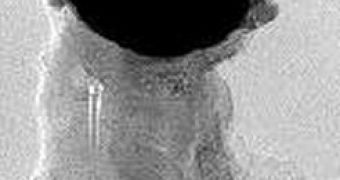One of the most important dangers of outer space missions, invisible and highly lethal, prevents humans from reaching Mars.
No, no fanged alien creatures lurking in the dark of space, but maybe just as bad.
Radiation is one of the biggest dangers to long-distance space travelers.
And since with the present technology it will take around two years for a manned mission to get to Mars, the issue has become very important for NASA researchers.
Even normal background radiation levels in interplanetary space are enough to pose dangers, including an increased risk of cancer, but intense bursts from solar flares can kill quickly.
During the missions that took place by now, the total astronauts' exposure time was not so long, since maintenance and other missions outside the space stations are rare and not long-lasting, and in case of solar flares, there is a special compartment in the ship, that is very well shielded.
Actually, it is very small and crowded, too.
Existing technology can, in fact, provide astronauts with the right protection, but a few feet of concrete armor, that would effectively protect the ship, would also ground it, if not because of the weight, because of the costs, since a single pound costs up to 10 000 $ to carry in space.
Also, the astronauts should all be wrestlers or well-trained American football players, in order to be able to move around in concrete armors.
But now, scientists working toward a manned Mars mission say they're closing in on a new, high-tech material that can shield astronauts from the deadly deep-space radiation.
The new material, a graphite nanofiber, would be much lighter than the dense materials like concrete, used today in most nuclear power plants.
Ram Tripathi, a senior research scientist at NASA's Langley Research Center, says that hydrogen, the lightest of materials, is the answer to this problem.
This doesn't mean the spaceship walls and astronauts suits will be made of hydrogen, but the superstrong materials from graphite nanofiber, enriched with trapped hydrogen, could means less weight and more space for the astronauts to work, sleep and relax.
The nanofibers are fibers with diameters of less than 100 nanometers, produced by interfacial polymerization and electrospinning, lightweight and not so hard to produce.

 14 DAY TRIAL //
14 DAY TRIAL //